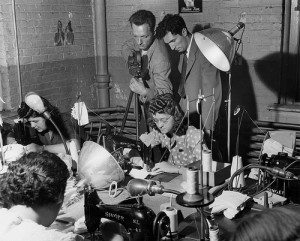 A time and motion study is part of the history of efficiency in the workplace, which also includes the development of Lean management.
A time and motion study is part of the history of efficiency in the workplace, which also includes the development of Lean management.
Every freshman business student will hear the story of a bricklayer observed by Frank Gilbreth, whose time and motion study of this man's work led to a nearly 75 percent reduction in the number of steps necessary to lay a single brick.
But does a time and motion study have a role in the modern Lean workplace?
Methods of Observing Wasted Motion
Lean management and scientific management often focus on the same factors, namely wasted time and wasted motion. A time and motion study is one way to locate waste through measurement, rather than by "instinct" or guesswork.
This is helpful to managers who are brought into an industry in which the manager has not previously worked. A Lean manager from the auto aftermarket world may not know how to build houses, but he or she likely knows how to use objective metrics to measure how rapidly employees build a house and how many motions the task entails.
The Hawthorne Effect
If Lean managers learn one thing from the history of a time and motion study, it should be about the Hawthorne Effect.
This phenomenon has two parts, both of which are critical to comprehensive understanding of business efficiency:
- People work differently when they know that they are observed.
- Employees' performance tends to improve because changes have been made, no matter what those changes are.
Attention to the Hawthorne Effect can prevent Lean managers from becoming overconfident about their own influence on an organization. It is important managers understand that an improvement in key performance indicators does not necessarily mean a permanent change, nor that the specific change made was the ideal choice.
Often, a sudden improvement is simply employees' reaction to the installation of a new manager.
Feeling valued and receiving personal attention from leadership can also lead to a temporary boost. Rather than expecting these natural bursts of energy to last forever, Lean management should focus on making changes that allow the same level of productivity to be sustained with less expenditure of energy, so that when employees return to investing a "maintenance" level of energy in their work, their heightened productivity remains.
Should You Do a Time and Motion Study?
A time and motion study can be helpful to modern Lean managers, but they are not the only way to observe time spent and motions made in a task.
A defined study with parameters and announced observation may exaggerate the Hawthorne Effect.
Perform a time and motion study if you feel that it would be helpful to your organization, but consider also or alternately incorporating continuous measurement of the same. At least once a day, Lean managers should spend time unobtrusively observing workers, timing them as they progress toward task completion, and taking down information on motions used.
Thus, you can enjoy similar benefits to those of a formal study without the same risk of false gains in performance.
